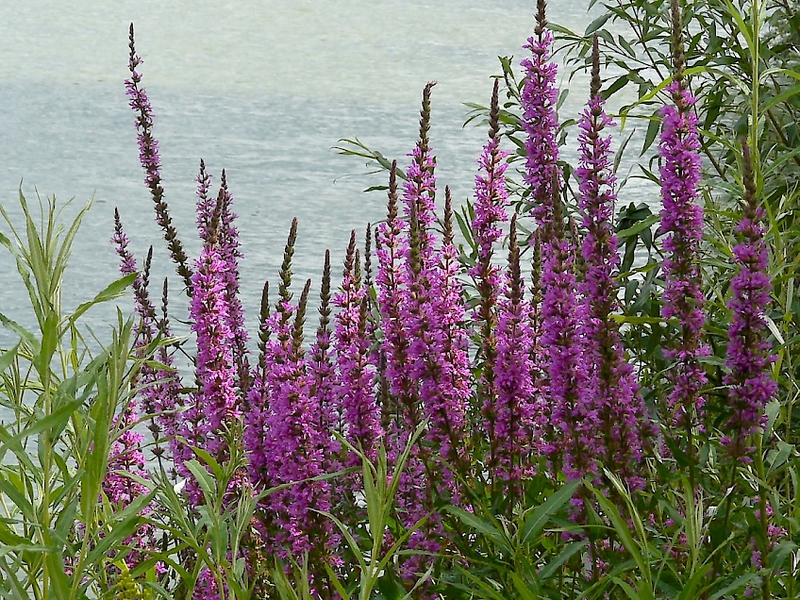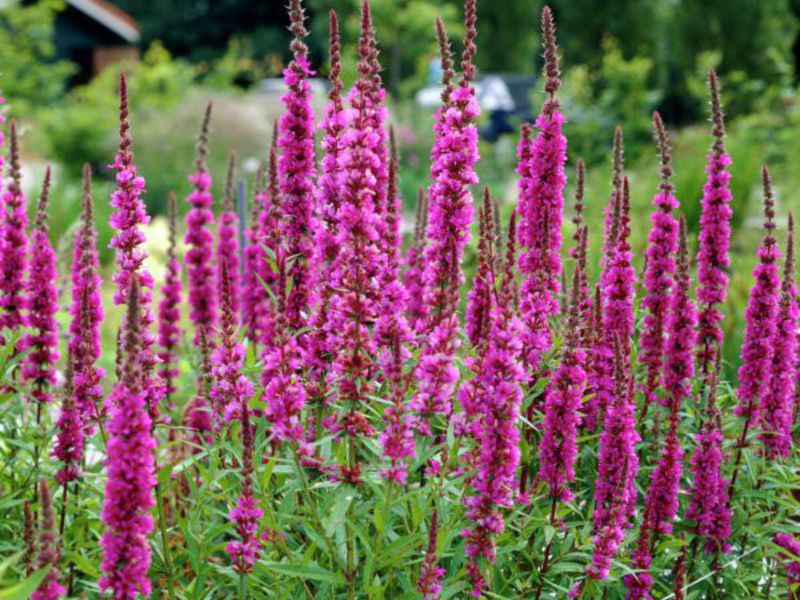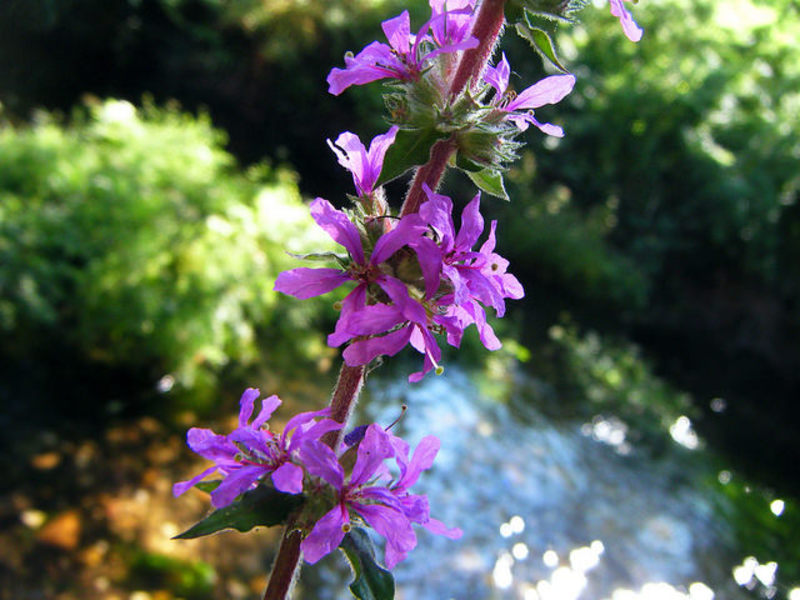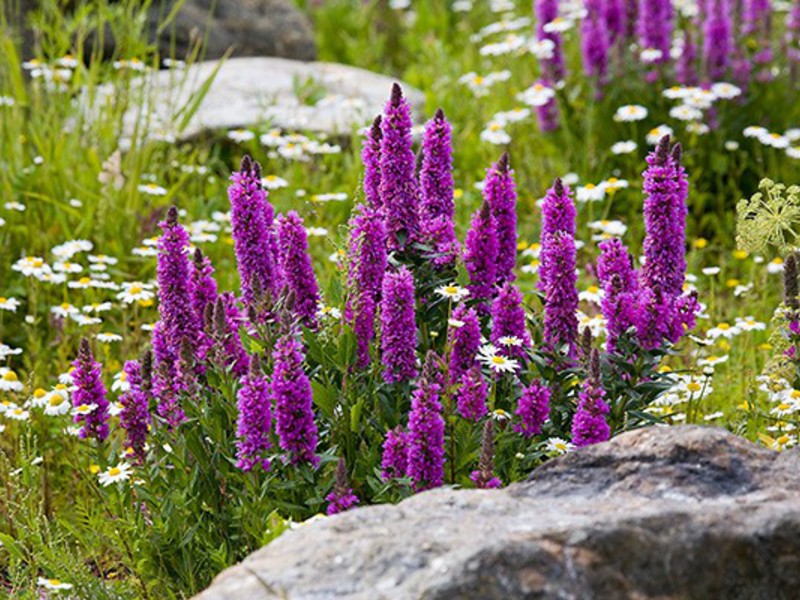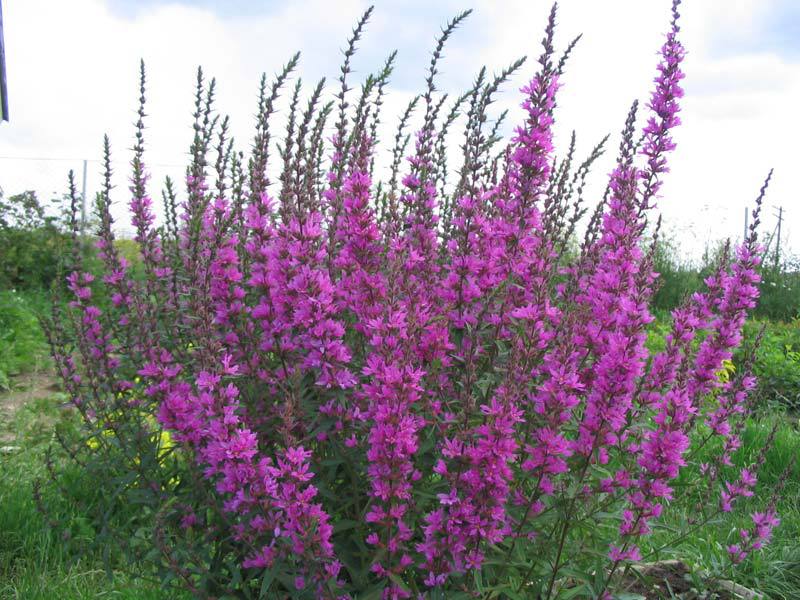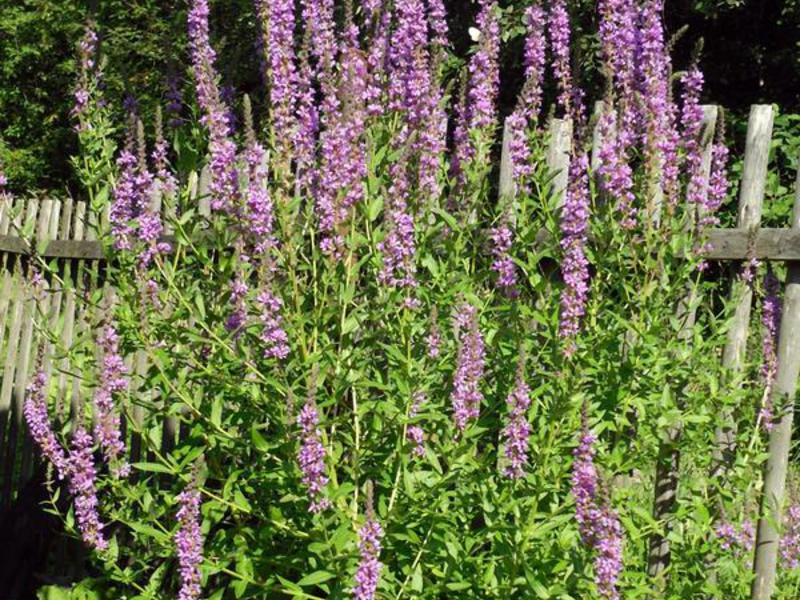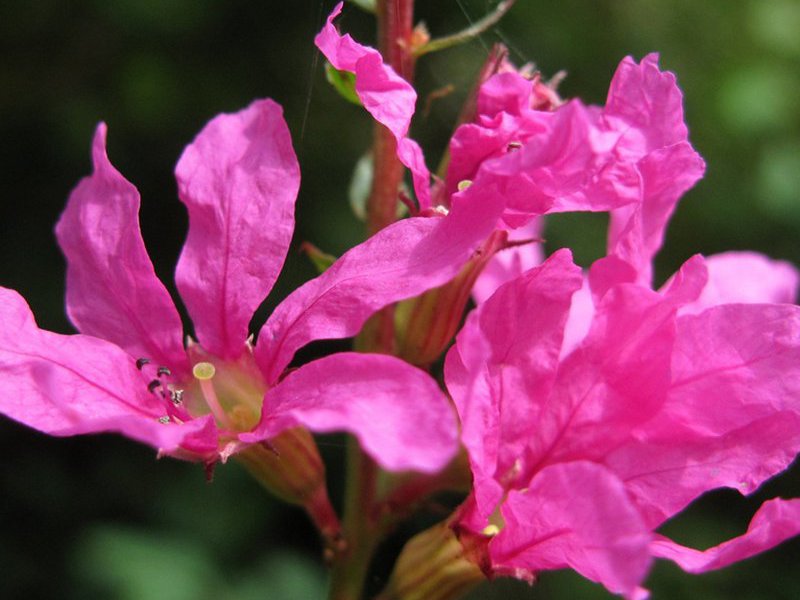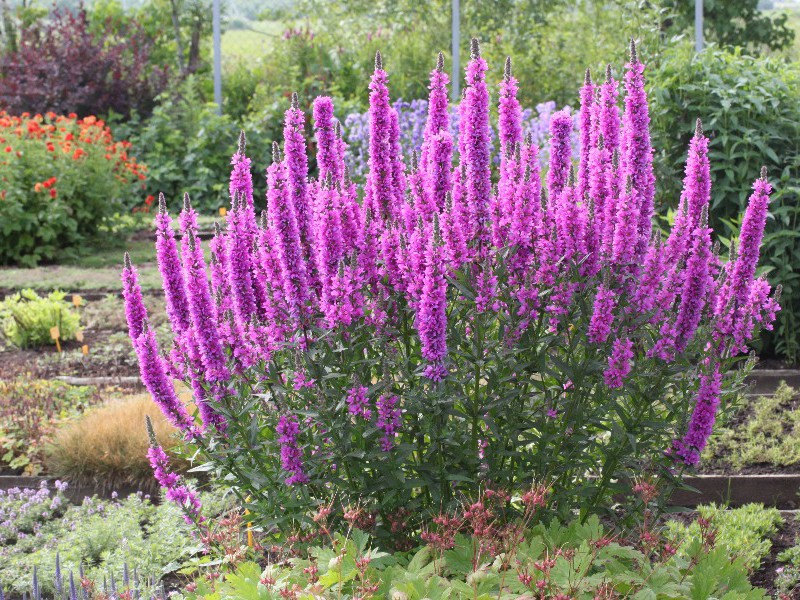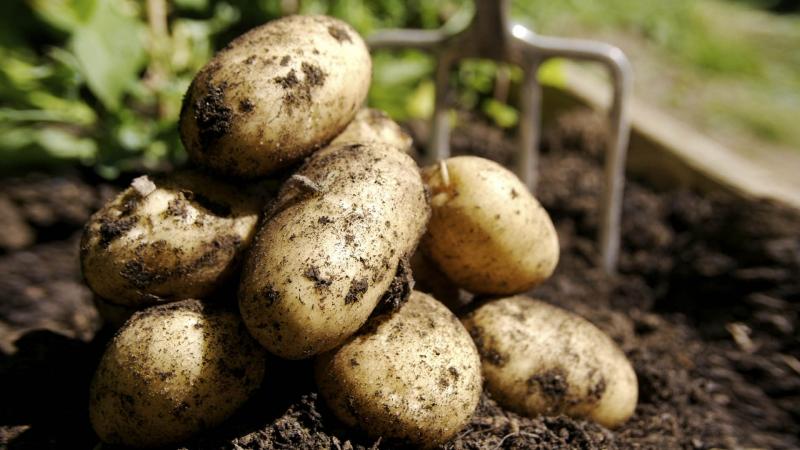On the banks of rivers and lakes, you can see tall plants, striking with their beautifully flowering inflorescences rushing upward. This is willow loosestrife or plakun-grass. The flower got its second name due to the fact that "tears" appear on its leaves in the morning. Thus, the loosestrife gets rid of excess moisture. Blooming all summer long, the plant attracts the eye with its bright colors. With its help, any garden plot can be made spectacular and festive.
Content
Description, varieties and photos of the willow loaf
Plant grows up to 1.2-1.5 meters and blooms with pink-lilac flowers that look like stars. Its inflorescences can be up to 50 centimeters long. The loosestrife is characterized by erect tetrahedral stems, loose large clumps and a woody creeping rhizome. The leaves of the plant, green in summer and red in autumn, are lanceolate.
Unfortunately, an attractive loosestrife cannot boast of its varietal variety. Popular varieties include:
- Derbennik "Pink Pearl" - the plant grows up to 1.2 m, is distinguished by a straight, even stem, dense spike-shaped inflorescences and bright mauve flowers. The loosestrife of this variety is winter-hardy; it can grow in one place for several years.
- The Robert variety is a very showy plant. Reaching a height of only 60 centimeters, the Robert loosestrife blooms with unusual salmon-red flowers.
- The Feuerkerz plant blooms profusely for two months with pink-red flowers. It grows up to 70-80 centimeters.
- The Blush loosestrife is distinguished by its blush-like delicate pink flowers.
- Swirl is uniquely beautiful. Its bright pink flowers appear transparent and airy.
The main advantages of plakun grass are its versatility and long flowering... On garden plots with its help, you can arrange not only mikboxers and flower beds, but also reservoirs. A flower can even grow in water.
Reproduction and planting
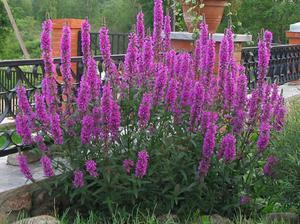 The willow loaf prefers sunny, blown areas, but it can grow in partial shade. The soil for planting it should be light, nutritious and moist. The plant will not grow on poor, dry and too dense soils.
The willow loaf prefers sunny, blown areas, but it can grow in partial shade. The soil for planting it should be light, nutritious and moist. The plant will not grow on poor, dry and too dense soils.
For good development of bushes in the ground, it is recommended add high peat at the rate of 10 buckets per square meter of land. This will provide the plant with nutrients and retain moisture in the soil.
The most optimal place for growing a loosestrife is the shore of a body of water. However, new varieties of hybrids have good drought resistance, so they grow and bloom well anywhere in the garden.
Planting a plant carried out according to the usual scheme:
- The distance between the pits for divisions should be about 50 cm, for seedlings - 30-35 cm.
- Organic fertilizers are applied to the soil at the bottom of the pit.
- The plant sheds well after planting.
It is possible to propagate willow loosestrife both by dividing the bush and by seeds.
Growing a loosestrife from seeds
A plant from seeds can multiply by self-sowing, but if you collect seeds, then you can get good, powerful bushes from them.
In order for the loosestrife to bloom in the first year, grow from its seeds recommended by seedling method... Sowing should be done in March. For this, prepared containers are filled with soil, on the surface of which flower seeds are sown. After moistening the soil with a spray bottle, cover the seedling box with glass or film, and place it in a bright place with an air temperature of at least + 18C. This will create a greenhouse effect, and the seeds will hatch quickly and simultaneously.
When three true leaves appear, the seedlings need to be cut into separate cups. Seedlings can be planted in open ground only after the last frost has passed. The distance between seedlings should be at least 30-40 centimeters.
In early spring or October, plakun grass seeds can be sown directly into open ground in a seedbed. In this case, flowering can only be expected in the second year.
Dividing the bush
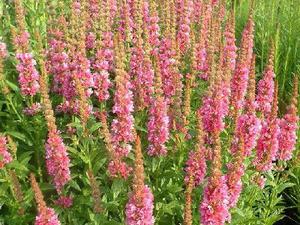 This is the simplest breeding method for the willow bush. You can start dividing the bushes from early spring to autumn.
This is the simplest breeding method for the willow bush. You can start dividing the bushes from early spring to autumn.
It is recommended to use a shovel or ax to separate powerful rhizomes. The strips should have several growth points and strong roots. It is better not to separate small processes, since they will recover and adapt for a long time. Some of them may not take root at all.
If you cannot divide a powerful bush, then you can propagate the loosestrife by cuttings. Root cuttings cut with the heels are planted in loose soil and covered with a glass jar or other suitable cap. In such humid conditions, the plant will quickly take root and begin to grow.
Tips for caring for plump grass
The willow loaf belongs to plants that do not need special care. If the bushes are not planted near a reservoir, then they require regular watering... Due to prolonged drought, flowers may lose their attractiveness. However, temporary drying out of the soil will not affect these hardy plants. In the first year of planting, care consists in loosening the soil around the bushes, and watering abundantly in dry weather.
To ensure long flowering, the loosestrife requires feeding. Soil nutrition can be provided immediately after planting with mulch. Compost or peat will not only fertilize the soil, but also help retain moisture in it.
Any mineral fertilizers with a minimum nitrogen content will help the plant achieve the greatest decorative effect. It is recommended to introduce them at the very beginning of flowering. The looser reacts to excess nitrogen in the soil by lodging shoots.
Pruning bushes
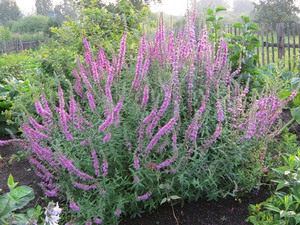 The loosestrife is prone to self-seeding, therefore, in order to prevent undesirable growth of bushes, faded flower stalks must be cut off before the seeds ripen.
The loosestrife is prone to self-seeding, therefore, in order to prevent undesirable growth of bushes, faded flower stalks must be cut off before the seeds ripen.
In the spring, you can do sanitary pruning by removing the remaining ground parts of the plant from last year. However, the cut can be done in the fall, during the closing of the summer cottage season. To do this, all ground parts are removed at the root with a secateurs. To decorate the winter garden, some dry shoots can be left.
You can form bushes depending on what kind of loosestrife composition you want to see in landscape design. To give the bushes the correct shape and greater density, during the summer they need to be shaped by pruning.
Diseases and pests of loosestrife
This perennial plant is very resistant to various diseases and pests. When it is grown in flower beds, you only need to make sure that aphids do not move to them from other plants. If it is found, it will be necessary to treat the bushes with special preparations.
Compositions from willow loaf
When decorating a garden plot, from a combination of loosestrife with other flowers you can create spectacular compositions.
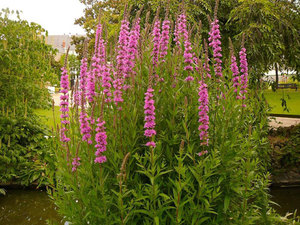 Plakun-grass along with tansy will look natural and a little sloppy.
Plakun-grass along with tansy will look natural and a little sloppy.- By planting a loosestrife next to a plant of the umbrella family, you can indicate its majesty and color saturation.
- Stem and loosestrife growing together will look beautiful.
- Placun grass seems to be created for mickboxers in a natural style. In the company you can plant cereals, blueheads, veronicastrum, phlox. The mickboxer will look spectacular if all these plants are planted not one by one, but in large spots.
- A contrasting composition near the reservoir can be made from loosestrife, Siberian iris and dotted loosestrife.
- The composition of the planted loosestrife with purple inflorescences against the background of yellow goldenrod looks festive and bright.
- Planted between gechers, liatris, loosestrife, lupines, the Portenschlang bells look like a “river” with two “banks”.
Placun grass cannot be called an aggressorbut as the plant grows rapidly, it may well crush weaker plants. Therefore, when creating compositions next to the loosestrife, it is recommended to plant strong enough plants.
Having chosen a place for this plant in the garden and creating a beautiful composition with it, one should not forget about caring for the plant. Plakun-grass, although unpretentious, requires attention when growing.
